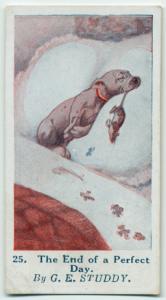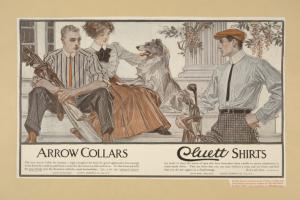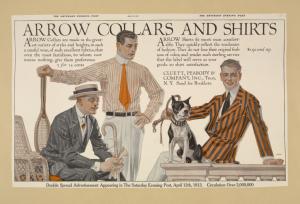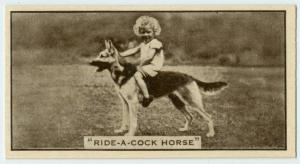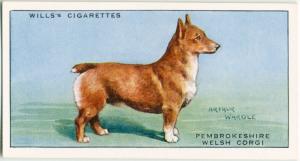Louise Erdrich looked at the northern tallgrass prairie and
wrote:
I would be converted to a religion of grass. Sleep the winter away and rise headlong each spring. Sink deep roots. Conserve water. Respect and nourish your neighbors and never let trees gain the upper hand. Such are the tenets and dogmas. As for the practice — grow lush in order to be devoured or caressed, stiffen in sweet elegance, invent startling seeds — those also make sense. Bow beneath the arm of fire. Connect underground. Provide. Provide. Be lovely and do no harm.
Provide. Here is California farmer Andy Griffin, author of
The Ladybug Letter, writing about "the karma of meat":
[C]ooking meat is the way nature allows us to eat grass. By profession I’m a vegetable farmer, but as a hobby I keep a flock of goats and sheep along with a tiny herd of Dexter cattle and I think of them collectively as my “meat garden.” My animals eat cull vegetables, like over-ripe tomatoes, under-ripe winter squash and deformed beets, but mostly they eat grass from the hillsides around my home that are too steep and dry for me to farm. Remember the Dust Bowl? One of the most profound and long-lasting catastrophes of the “dirty thirties” was that speculation in grain caused vast tracts of arid, marginal land in the western Great Plains to be ploughed down for wheat. When the drought came there was no turf to hold the soil down and it blew away. That land should have never been taken away from the Buffalo and the beef cattle.
"Cooking meat is the way nature allows us to eat grass."
Andy Griffin
And when Andy says "beef cattle" he isn't talking about the "karmically-challenged modern beef steer" fattened on corn in a
feedlot. People, there's a reason Isaiah says in the Bible, "All flesh is grass." [A reason that has nothing to do with meat for dinner, but still.]
Everything dies. If we are conscientious, the stock we raise will die with as little stress as possible after a comfortable life. And this beats being chased down and torn apart while still alive, or wasting away from injury and infection, or dying of some hideous parasite-borne condition on the African savannah, if you ask me. [Full disclosure: when an earnest vegan
says, "I am someone who cares about preventing cruelty to animals," I want to say, "Dude -- like
Battle at Kruger?"] As the
man wrote, "No wild animal dies of old age."
All of this is by way of introducing some links to excellent posts on raising sheep [and other stock] for slaughter, and dinner.
First, from the always terrific Bill Fosher [owner/moderator of the
Sheep Production Forum]:
Honor thy meat.
I loved this:
Q: “How do you eat meat from animals you knew?”
A: “I don’t like to eat meat from an animal I didn’t know!"
True, true — the only lamb I used to eat, before free-range and grass-fed became trendy, was barbecued on a friend's ranch not long after being slaughtered. The person sitting across from me at the table could tell me everything about that individual lamb, from its grazing habits to the name of its great-grandma. I knew where that lamb came from and what care it received. Who do you ask about the shrink-wrapped ground beef at
Whole Foods?
Ardi Gasna has been in my blog list forever, and back in April, California chef, sheep dairy owner and artisanal cheesemaker Rebecca King
wrote about slaughtering lambs she'd raised:
I know some may find it morbid (although they themselves eat meat that someone else kills!), but I've discovered I actually enjoy slaughtering and butchering my own animals. There is a certain satisfaction in knowing that I was responsible for this animal from its birth until its death. I am also fascinated in the process by which a living thing becomes food that we eat. The lamb has been really delicious as well, some of the best I've ever had.
As it happens, Andy Griffin of
Mariquita Farm and The Ladybug Letter has
crossed paths with Rebecca and her sheep. Small blogosphere.
Farmer and
Honest Meat blogger
Rebecca Thistlewaite also has some words on lamb, specifically: "So the California raised grassfed lamb tasted better, but why does it cost so much more?" Read the rest in her post
The Real Dirt on Lamb.
And what about the actual, you know, slaughter? How much easier it is for the animals when they are killed quickly at their own farm or ranch, without the stress caused by transport to a distant slaughterhouse! So why aren't there more MPUs?

That truck on the left is a mobile slaughterhouse, or MPU - Mobile Processing Unit. From The WSJ's
Have Knife, Will Travel:
Scott Meyers of Sweet Grass Farm Beef [on Lopez Island, Washington] started raising Japanese Wagyu cattle on his grass pasture once the mobile unit was up and running. "It gave me access to the marketplace," he says. "Without that, I wouldn't have even considered" raising beef.
Mr. Meyers says the mobile unit offers his animals a "sublime" death because they avoid the stress of traveling long distances. Such care makes his beef taste better, he says, as he introduces part of his herd: "This one's Violet, here's Splits and Buttercup."
The Ethicurean has more on the Island Grown Farmers Cooperative
here.
But that's Washington State. Are there any mobile rigs in California?
Sort of. Marissa Guggiana explains in
Leading Lambs to Slaughter — In search of a kinder, gentler abbatoir:
Right now there are seven operating MPUs in the U.S., but none of them are in California. California’s lone MPU sits gathering dust in Monterey County. The MPU is operated by George Work, of Work Family Ranch. Work’s enthusiasm for the practicality of the MPU got it built, but it hasn’t been enough to overcome state and county bureaucracy, and a federal regulatory system that seems reluctant to change.
[...]
The general response from other meat processors, government workers, and members of the sustainability community to the MPU is a list of reasons why it does not work, has not worked, and will not work. Most of these focus on county regulations. For instance, in Washington, where [Bruce] Dunlop operates, he’s able to compost the non-edible remainders and return them to the pasture as fertilizer. In California this wouldn’t be tolerated. While each county has its legal peculiarities, there seems to be an overarching resistance rooted in a fear of decentralization, a fear that if we move outside the model of faster, cheaper, and more, we lose.
We'll see what happens once the new administration takes over, though I suspect MPUs are not high on the list of concerns at the moment.
Related posts from this blog, with much link goodness.
Hey, that'd be a good title for a
book!
And finally, from one of the links above:
Keep in mind one of the oldest ways to get "free-range, grass-fed, organic, locally produced, locally harvested, sustainable, native, low-stress, low-impact, humanely slaughtered meat": by hunting it yourself.
 Warning: graphic images of a polar bear attack. Witnesses were powerless to intervene, but not, apparently, powerless to take pictures.
Warning: graphic images of a polar bear attack. Witnesses were powerless to intervene, but not, apparently, powerless to take pictures. Go, baby Speed Hippo, go! I am so GIMPshopping this photo.
Go, baby Speed Hippo, go! I am so GIMPshopping this photo. Dear little Upala's mother wouldn't care for him, so he was transfered to the Wilhelma Kindergarten for young apes. Wouldn't care for him...?! Who wouldn't want to care for such a precious little baby? Good grief, moms these days...!
Dear little Upala's mother wouldn't care for him, so he was transfered to the Wilhelma Kindergarten for young apes. Wouldn't care for him...?! Who wouldn't want to care for such a precious little baby? Good grief, moms these days...! 


















